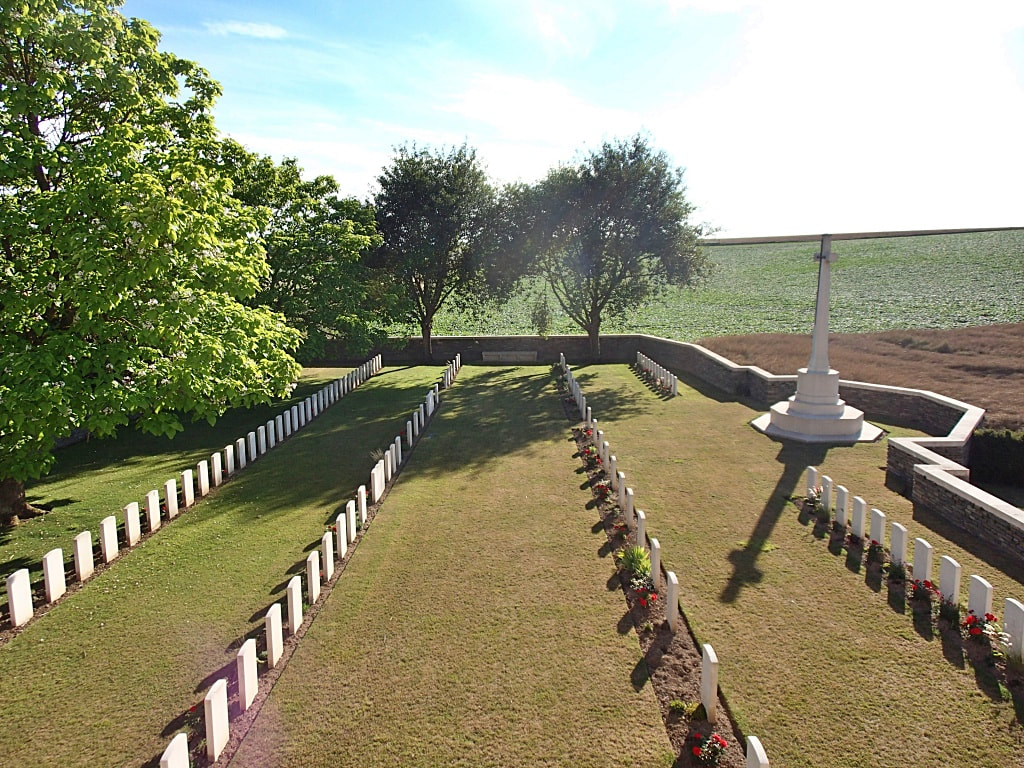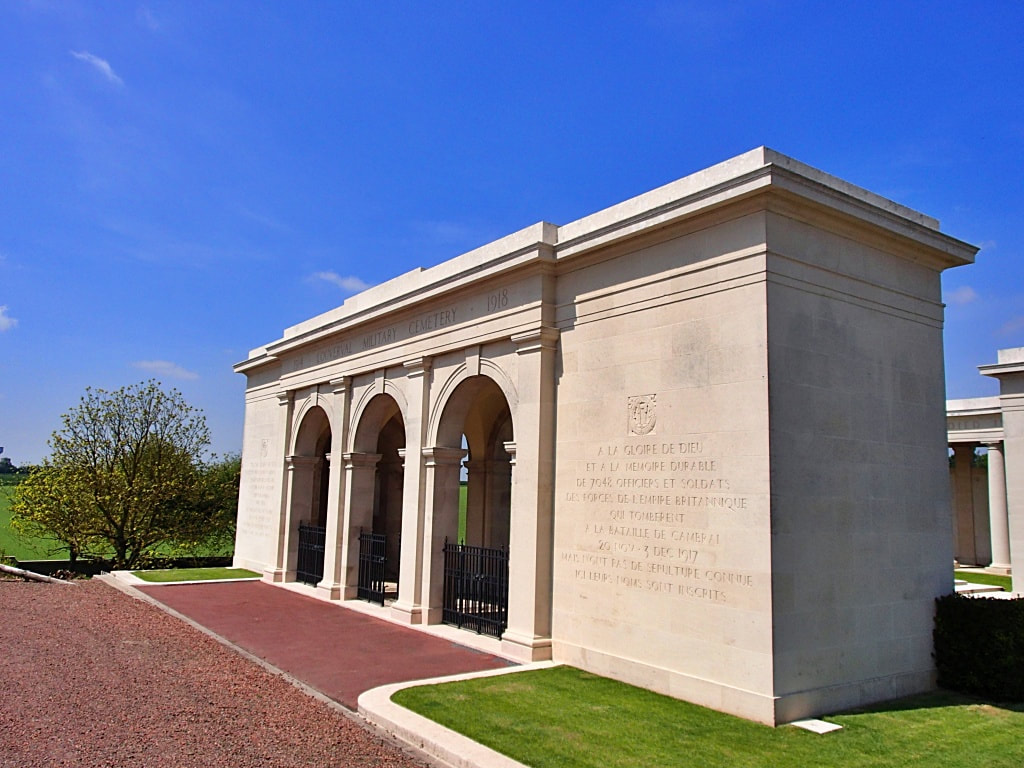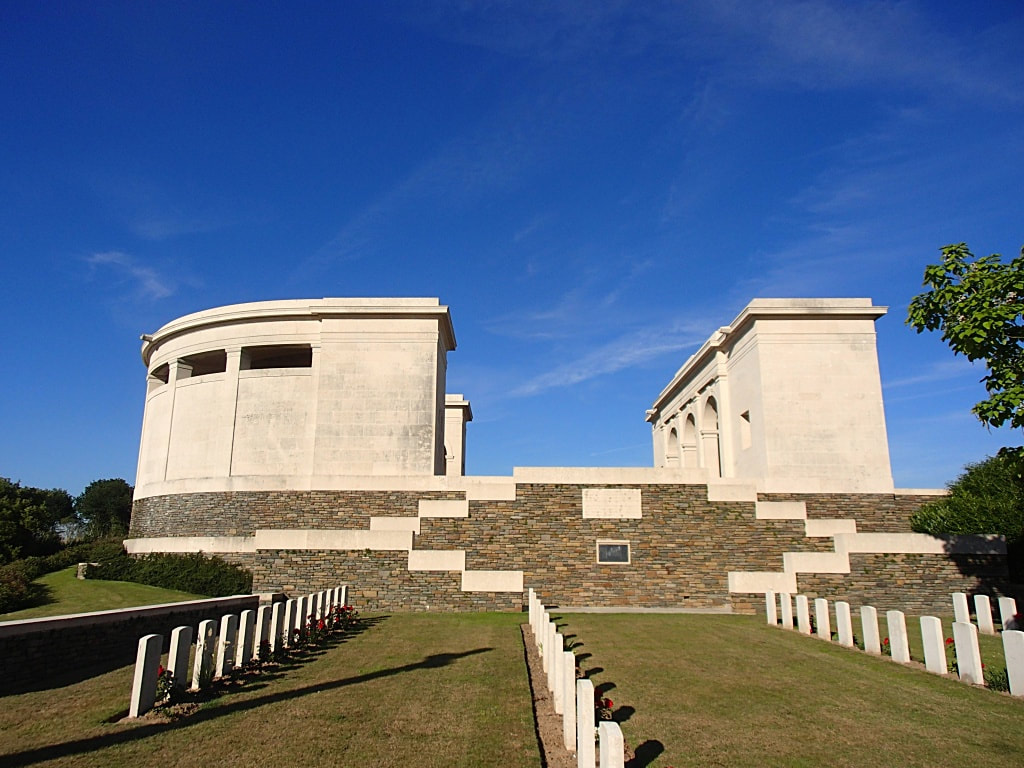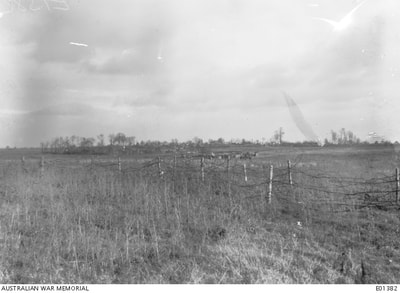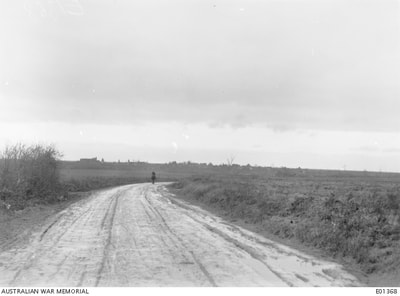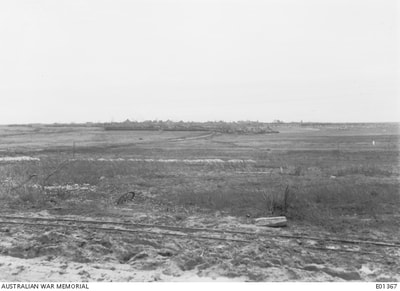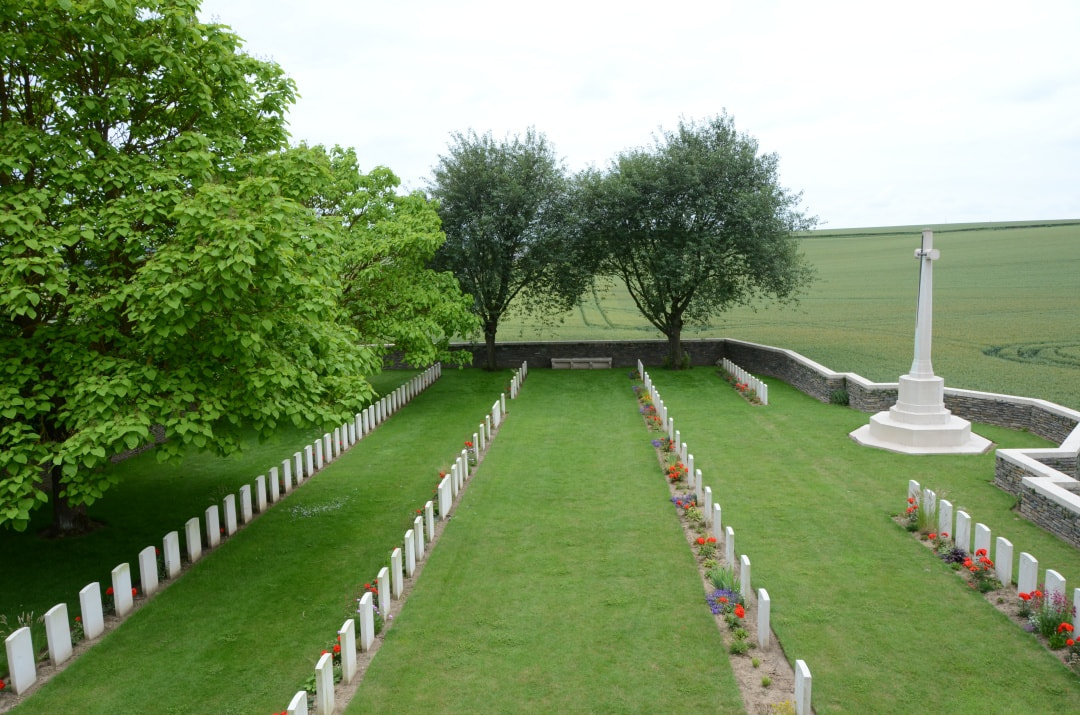LOUVERVAL MILITARY CEMETERY
Doignies
Nord
France
GPS Coordinates: Latitude: 50.13674, Longitude: 3.01518
Location Information
The small village of Louverval is on the north side of the N30, Bapaume to Cambrai road, 13 kilometres north-east of Bapaume, 16 kilometres south-west of Cambrai. Louverval Military Cemetery is situated on the north side of the N30, south of Louverval village and CWGC signposts on the N30 give advance warning of arrival at the Cemetery.
On a terrace within the cemetery will also be found the Cambrai Memorial.
Visiting Information
Wheelchair access to this site is possible with some difficulty.
Historical Information
The chateau at Louverval, was taken by the 56th Australian Infantry Battalion at dawn on 2 April 1917. The hamlet stayed in Allied hands until the 51st (Highland) Division was driven from it on 21 March 1918 during the great German advance, and it was retaken in the following September.
Parts of Rows B and C of the Military Cemetery were made between April and December 1917. In 1927, graves were brought in from the following cemeteries:-
LOUVERVAL CHATEAU CEMETERY, which was in a meadow near the Southern angle of the Chateau grounds. It was begun by German troops in March 1918, and used by British in September and October 1918. After the Armistice, a further nine British graves were brought in. It contained the graves of 78 soldiers, sailors and Marines from the United Kingdom, one Australian soldier and one New Zealand, and 23 German soldiers.
LOUVERVAL GERMAN CEMETERY was at the Eastern angle of the Chateau grounds; it contained the graves of 138 German soldiers and seven unidentified Highlanders.
Louverval Military Cemetery now contains 124 First World War burials.
Identified Casualties: United KIngdom 112, Australia 4, New Zealand 2. Total 118.
Unidentified Casualties: United Kingdom 6.
On a terrace at one end of the cemetery stands the CAMBRAI MEMORIAL which commemorates more than 7,000 servicemen of the United Kingdom and South Africa who died in the Battle of Cambrai in November and December 1917 and whose graves are not known.
Sir Douglas Haig described the object of the Cambrai operations as the gaining of a 'local success by a sudden attack at a point where the enemy did not expect it' and to some extent they succeeded. The proposed method of assault was new, with no preliminary artillery bombardment. Instead, tanks would be used to break through the German wire, with the infantry following under the cover of smoke barrages.
The attack began early in the morning of 20 November 1917 and initial advances were remarkable. However, by 22 November, a halt was called for rest and reorganisation, allowing the Germans to reinforce. From 23 to 28 November, the fighting was concentrated almost entirely around Bourlon Wood and by 29 November, it was clear that the Germans were ready for a major counter attack. During the fierce fighting of the next five days, much of the ground gained in the initial days of the attack was lost.
For the Allies, the results of the battle were ultimately disappointing but valuable lessons were learnt about new strategies and tactical approaches to fighting. The Germans had also discovered that their fixed lines of defence, no matter how well prepared, were vulnerable.
The Cambrai Memorial was designed by H Chalton Bradshaw with sculpture by C S Jagger.
Total Commemorated 7,115. (United Kingdom 7,110, South Africa 5)
The small village of Louverval is on the north side of the N30, Bapaume to Cambrai road, 13 kilometres north-east of Bapaume, 16 kilometres south-west of Cambrai. Louverval Military Cemetery is situated on the north side of the N30, south of Louverval village and CWGC signposts on the N30 give advance warning of arrival at the Cemetery.
On a terrace within the cemetery will also be found the Cambrai Memorial.
Visiting Information
Wheelchair access to this site is possible with some difficulty.
Historical Information
The chateau at Louverval, was taken by the 56th Australian Infantry Battalion at dawn on 2 April 1917. The hamlet stayed in Allied hands until the 51st (Highland) Division was driven from it on 21 March 1918 during the great German advance, and it was retaken in the following September.
Parts of Rows B and C of the Military Cemetery were made between April and December 1917. In 1927, graves were brought in from the following cemeteries:-
LOUVERVAL CHATEAU CEMETERY, which was in a meadow near the Southern angle of the Chateau grounds. It was begun by German troops in March 1918, and used by British in September and October 1918. After the Armistice, a further nine British graves were brought in. It contained the graves of 78 soldiers, sailors and Marines from the United Kingdom, one Australian soldier and one New Zealand, and 23 German soldiers.
LOUVERVAL GERMAN CEMETERY was at the Eastern angle of the Chateau grounds; it contained the graves of 138 German soldiers and seven unidentified Highlanders.
Louverval Military Cemetery now contains 124 First World War burials.
Identified Casualties: United KIngdom 112, Australia 4, New Zealand 2. Total 118.
Unidentified Casualties: United Kingdom 6.
On a terrace at one end of the cemetery stands the CAMBRAI MEMORIAL which commemorates more than 7,000 servicemen of the United Kingdom and South Africa who died in the Battle of Cambrai in November and December 1917 and whose graves are not known.
Sir Douglas Haig described the object of the Cambrai operations as the gaining of a 'local success by a sudden attack at a point where the enemy did not expect it' and to some extent they succeeded. The proposed method of assault was new, with no preliminary artillery bombardment. Instead, tanks would be used to break through the German wire, with the infantry following under the cover of smoke barrages.
The attack began early in the morning of 20 November 1917 and initial advances were remarkable. However, by 22 November, a halt was called for rest and reorganisation, allowing the Germans to reinforce. From 23 to 28 November, the fighting was concentrated almost entirely around Bourlon Wood and by 29 November, it was clear that the Germans were ready for a major counter attack. During the fierce fighting of the next five days, much of the ground gained in the initial days of the attack was lost.
For the Allies, the results of the battle were ultimately disappointing but valuable lessons were learnt about new strategies and tactical approaches to fighting. The Germans had also discovered that their fixed lines of defence, no matter how well prepared, were vulnerable.
The Cambrai Memorial was designed by H Chalton Bradshaw with sculpture by C S Jagger.
Total Commemorated 7,115. (United Kingdom 7,110, South Africa 5)
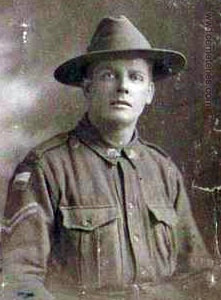
904 Corporal
Edward Davidson
12th Bn. Australian Infantry, A. I. F.
Died Between 06/04/1917 and 10/04/1917
Row B. 22.
Husband of Mrs A. Davidson, 58 Burke Street, Leederville, Western Australia.
Australian records give his date of death as between 10th and 14th April 1917. His effects were returned to his wife in Australia and consisted of; 1 Identity disc, 1 gift tin, 2 knives, purse, Arabic book and letter.
Edward Davidson
12th Bn. Australian Infantry, A. I. F.
Died Between 06/04/1917 and 10/04/1917
Row B. 22.
Husband of Mrs A. Davidson, 58 Burke Street, Leederville, Western Australia.
Australian records give his date of death as between 10th and 14th April 1917. His effects were returned to his wife in Australia and consisted of; 1 Identity disc, 1 gift tin, 2 knives, purse, Arabic book and letter.
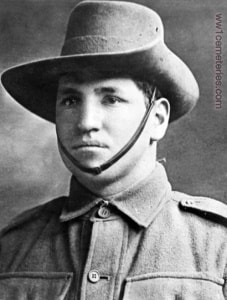
3339 Private
Charles Edwin Kirkness
6th Bn. Australian Infantry, A. I. F.
17th April 1917, aged 27.
Row C. 19.
Son of James and Minnie Amy Kirkness, of 514, Burke Rd., Camberwell, Victoria, Australia.
His headstone bears the inscription; "Dear Charlie Though Lost To Sight To Memory Ever Dear Mother."
Charles Edwin Kirkness
6th Bn. Australian Infantry, A. I. F.
17th April 1917, aged 27.
Row C. 19.
Son of James and Minnie Amy Kirkness, of 514, Burke Rd., Camberwell, Victoria, Australia.
His headstone bears the inscription; "Dear Charlie Though Lost To Sight To Memory Ever Dear Mother."

554843 Rifleman
Herbert Edgar Phipps
"A" Coy. London Regiment (Queen's Westminster Rifles)
27th November 1917, aged 19.
Row B. 9.
Son of Wallace and Emma R. Phipps, of 35, Castleton Rd., Goodmayes, Essex.
His headstone bears the inscription; "Is It Well With The Lad? It Is Well."
Herbert Edgar Phipps
"A" Coy. London Regiment (Queen's Westminster Rifles)
27th November 1917, aged 19.
Row B. 9.
Son of Wallace and Emma R. Phipps, of 35, Castleton Rd., Goodmayes, Essex.
His headstone bears the inscription; "Is It Well With The Lad? It Is Well."

Surgeon Lieutenant
Frank Pearce Pocock, D. S. O., M. C.Drake Bn. R.N. Div. Royal Navy
29th September 1918, aged 27.
Row A. 35.
Medical Officer on H.M.S. "Iris II" during raid on Zeebrugge. Son of Charles Wellesley Pocock and Mary Elizabeth Pocock, of 21, Dundonald Rd., Redland, Bristol.
Frank Pearce Pocock, D. S. O., M. C.Drake Bn. R.N. Div. Royal Navy
29th September 1918, aged 27.
Row A. 35.
Medical Officer on H.M.S. "Iris II" during raid on Zeebrugge. Son of Charles Wellesley Pocock and Mary Elizabeth Pocock, of 21, Dundonald Rd., Redland, Bristol.
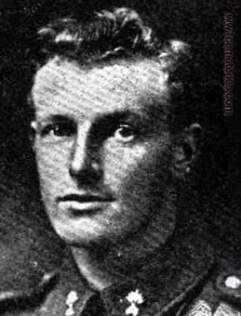
50524 Gunner
Hubert George Scott
New Zealand Field Artillery
27th September 1918, aged 22.
Row B. 17.
Son of George B. and Lily M. Scott, of Roseneath, Wellington, New Zealand.
Hubert George Scott
New Zealand Field Artillery
27th September 1918, aged 22.
Row B. 17.
Son of George B. and Lily M. Scott, of Roseneath, Wellington, New Zealand.
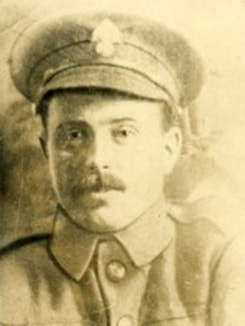
G48456 Private
Albert Turner
22nd Bn. Royal Fusiliers
30th December 1917, aged 33.
Row B. 21.
Son of Maria Turner (formerly Bird) & William Turner of Spriggs Hollies, Chinnor, Oxon, Buckinghamshire. Husband of Henrietta Turner of 32 Solihull Road, Sparkhill, Birmingham. Father of Vera, Marguerite & Albert Frederick Turner.
His headstone bears the inscription; "He Gave His Life For Others Freely That We Might Live."
Picture courtesy of granddaughter Joan Pullen
Albert Turner
22nd Bn. Royal Fusiliers
30th December 1917, aged 33.
Row B. 21.
Son of Maria Turner (formerly Bird) & William Turner of Spriggs Hollies, Chinnor, Oxon, Buckinghamshire. Husband of Henrietta Turner of 32 Solihull Road, Sparkhill, Birmingham. Father of Vera, Marguerite & Albert Frederick Turner.
His headstone bears the inscription; "He Gave His Life For Others Freely That We Might Live."
Picture courtesy of granddaughter Joan Pullen

